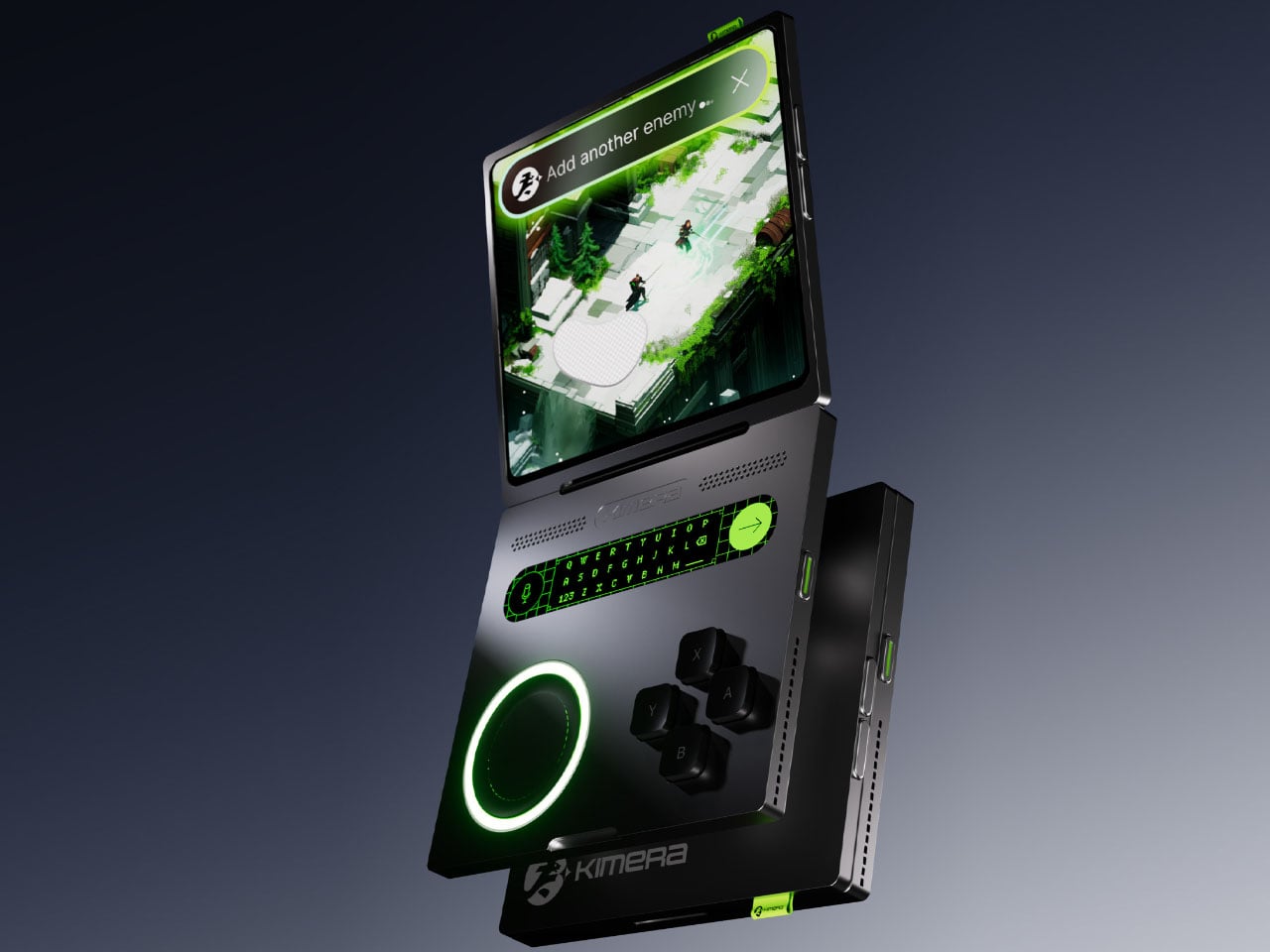
BEFORESANDAFTERS.COM
NFTS students built a miniature replica of the Tantive IV corridor
A miniature ship, a detailed droid maquette, digital set extensions and a fully-CG droid all inspired by ‘Rogue One’ were also crafted. See it all in this visual breakdown.
Here at befores & afters, we’ve regularly taking exclusive looks at the UK’s National Film and Television School (NFTS) Model Making and Visual Effects projects involving miniatures, motion control and digital visual effects.
Most recently, NFTS embarked on a project inspired by Rogue One: A Star Wars Story, and befores & afters has the exclusive breakdown of the build process. Students constructed a miniature replica of the Tantive IV spaceship, a section of its corridor interior and a detailed droid maquette.
“Every year our students raise the bar on what is possible within this module,” says John Lee, NFTS Head of Model Making. “It’s a joy to create works inspired by such iconic films. It really engages the students and allows me to develop the course with some real-world experience, connecting students and education with industry. I have to say, this year, we’ve really smashed it!”
Lee himself worked in the prop-making and set decoration departments for Rogue One, as well as other Star Wars. This latest miniature build was inspired by Lee’s time working alongside Head of Prop Making Mark Rocca and overall Prop Master Jamie Wilkinson on Rogue One.
Meanwhile, Head of CG at NFTS Jonathan McFall led the VFX students on their task of building digital set extensions and a fully animated CG character that was composited into the miniature plates. The process also included a motion control shoot orchestrated by Ember Films.
Here’s the final film, and a visual breakdown of the process follows.
Behind the build
The model set and miniature spaceship takes around 6 weeks to build with a team of 12 model makers.
Starts with a simple hand drawn storyboard of the sequence they intend to film.
Model Makers made a 1:5 scale white card maquette to plan proportions.
The corridor set is full of small details and lots or repeat shapes, introducing more digital content to what the students are learning such as Rhino and 3D printing, feeding into current industry requirements.
Students from Model Making and VFX examine the 1:5 scale white card maquette with John Lee and VFX tutor Jonathan McFall.
The 2024/24 model making cohort on day one of the NFTS Model Making course at the National Film and Television School.
Model making student operating the bandsaw to cut the overside bulkhead shapes before routing.
Work continues
The model was built at 1:5 scale and measured approx. 2.5m x 1.5m x 600mm.
The set comprises matching bulkheads, doors and wall panels. The students also created a new section of corridor in the form of an escape hatch to offer them a chance to develop their creative design skills.
The set has a pristine white gloss finish, which is very hard to pull off in miniature.
Model making student operating the router to make repeatable bulkhead shapes for the Tantive IV corridor set.
Model making student on the router, using a profile template
3D printed test for vac form pattern. Useful to establish accurate shape which we can easily amend dimensions based on preferred vac form material thickness.
Vac form shapes coming together for the corridor wall details. Note, some are positive shapes, some negative, but all have to fit the same template.
Success, thumbs up from the model makers during vac forming.
Combining practical and digital
VFX students recreated the corridor in Maya and made additional digital assets including ceiling replacements, interactive lighting, and moving hatch doors and a fully animated CGI droid – named N4T5 (NFTS)!
“Both departments are working with the same space, one practical, and the other digital. As I teach this, it’s incredible to witness how both departments are problem solving the same issues.” – John Lee
Model Makers are working in teams to break down the build into key parts, each learning how to use some of the larger tools and machines in the workshop to a high standard but more importantly – learning how to effectively communicate and collaborate.
Bulkhead shapes coming together on the full size 1:5 scale drawing.
Workshop assembly line of model makers fabrication MDF bulkheads, including spares.
Both model makers and VFX students in the VFX base looking at the pre-visualisation.
Model making student working on digital concept design for escape hatch, not seen in a Star Wars film.
Model maker working on accurate patterns for the doors, aligning with the drawing at all times. Made from a Rhino drawing, 3D print, clean up, 2K primer and fine sanding before making silicone mould.
Laser cutting the fine details on wall mounted boxes using a jig for the laser to ensure accurate positioning of all vac forms, of which there were around 50.
Model makers align walls and bulkheads on the accurately marked out floor, just like how the full size set on ‘Rogue One’ was made back in 2015.
Testing practical LED lighting in workshop.
Model makers check that everything is level and square. There is nowhere to hide on a set build like this.
Starting to look a lot like the Tantive IV set now – Model maker working on electrics and the wall curves start to be dry fitted. These were made as 3D prints, moulded and cast in resin and fillite (bulking compound).
Fitting of laser cut wall frames.
Model maker testing practical LED lights in the escape hatch. Other elements in Grey Primer ready for paint.
Painting of the escape hatch underway, using references created by the NFTS model makers in the form of digital concept art.
White box fine details coming together. Every panel in exactly the right place required lots of research and development during the week-long white card build.
Model maker putting final touches to the escape hatch on set.
Final set up of the 1:5 scale corridor set on Stage 4 at the NFTS.
Grey maquette of the N4T5 droid, used for lighting references in post-production. This began as a sketch on paper, then went digital in order to create the animation, then back to maquette for the onset lighting references.
Model maker setting up a second droid for portfolio shots. Note the green screen backdrop so that the VFX students can drop in a digital set extension once the door opens, revealing a much larger space.
The filming stage
After the build, the model is carefully moved onto one of the NFTS filming stages. This year they were reunited with UK production company and moco specialists Ember Films.
NFTS VFX students take care of all the technical requirements and make sure they capture all the information needed to complete work on the film.
Worked with an NFTS Cinematography student to take care of on-set lighting, and learn the skills involved with shooting with a Motion Control rig.
Ember Films came on board and supplied on set motion control camera team and equipment.
Ember Films rig with NFTS’ own Alexa mini enters the escape hatch. Careful advance planning ensures the spaces are big enough for the camera to really integrate with the set. John Lee notes that it is “nice to be able to build large at 1:5 scale.”
Motion control camera capturing data of the stand in droid. Note: ceiling missing for the on set shooting to accommodate the over the set moco arm. Scene completed with a digital ceiling, as well as digital doors opening.
Tracker markers on set for one of the moco passes. Note the wall panel detail on show.
Model maker about to remove the practical door ready for the camera to advance into the escape hatch.
As it looked on the monitor as the sequence was shot. Lee notes: “Careful alignment with the previs made this sequence straightforward to direct, thanks to great prep by the NFTS VFX department and Ember Films very fluid moco system.”
VFX student with clapperboard to mark each pass.
Model maker and VFX student working together setting up the droid mock up for lighting pass.
Model makers setting up the Tantive IV spaceship miniature in front of green screen.
Close up Tantive IV miniature on set. “Due to time restraints,” says Lee, “we were unable to make a 6’ long version, so I had to be clever in the framing to make sure we saw just enough detail in the shot to feel believable and also capture the grandeur of a Star Wars miniature shot. I think we pulled it off!”
The whole team. Model making and VFX students, John Lee, Jonathan McFall, Ember team and on set AD’s and PM students.
The idea of specifying what and how the miniature set is shot, then prototyping dramatic intent is all achieved through previsualisation.
Texture and look dev specialist Mikey, building up the surfacing work for the N4T5 droid, using Substance Painter.
Lighting specialist Junze takes a very detail orientated approach to the CG lighting of the CG set extension of the miniature set. Lee: “Tweaking and re-optimising each render, as he goes – he celebrates shaving his render time down with a ring of our ‘render bell’.”
Nuke compositing specialist John adds reflections to the screen of the N4T5 droid using an image based lighting lat/long image, which has come out of the HDRI stitching process from PTGui software.
VFX breakdown
How to apply
Applications are now open for Model Makers to join the NFTS course. You can apply before 24 April to start in September 2025. nfts.co.uk/modelmaking
The post NFTS students built a miniature replica of the Tantive IV corridor appeared first on befores & afters.
0 Kommentare
0 Anteile
100 Ansichten












